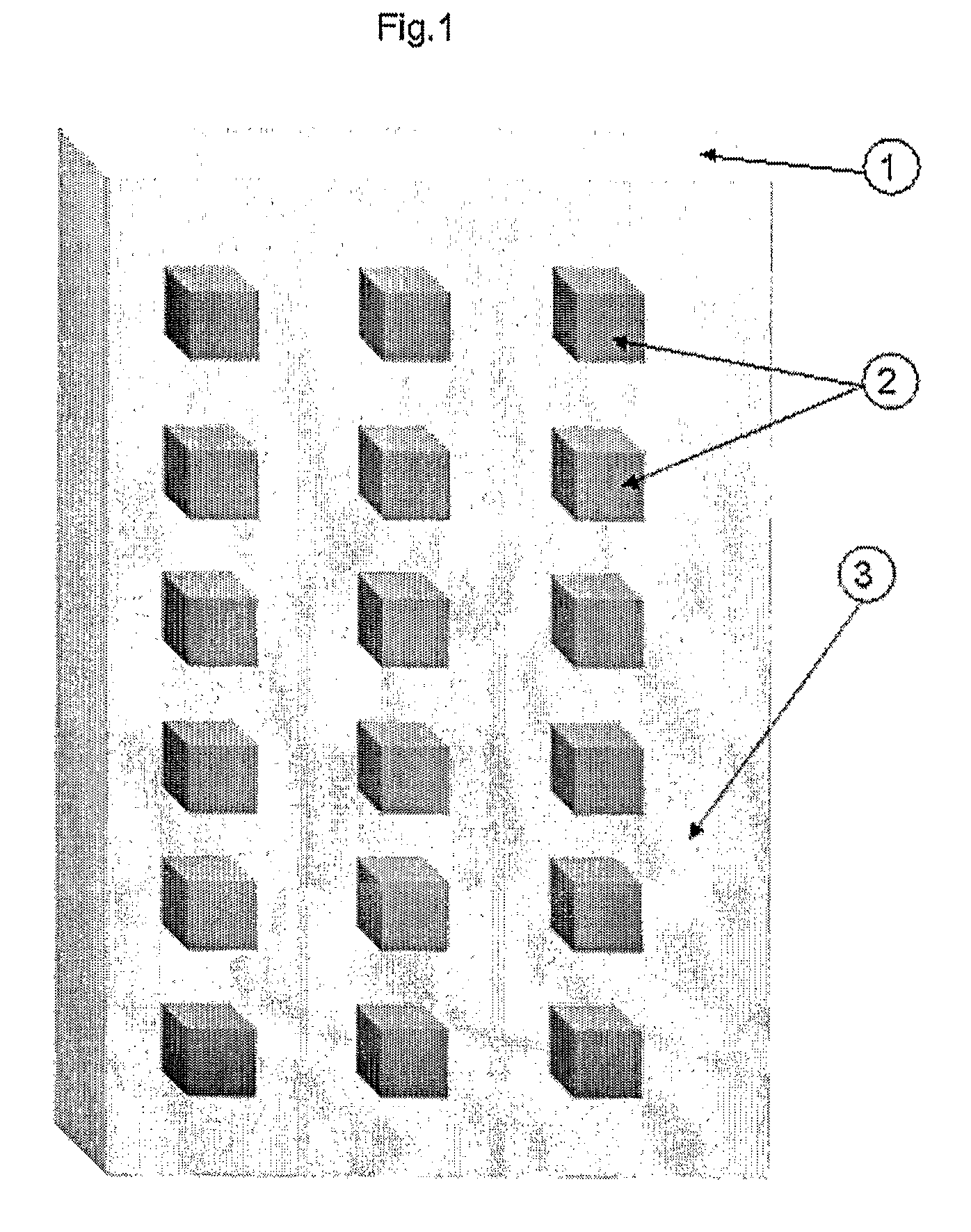Antistatic Coating For Surfaces Made Of Metal Materials And Dielectric Materials Or Of Dielectric Materials Only In Particular Antenna Surfaces And Method Of Application Thereof
a technology of dielectric materials and metal materials, applied in the direction of ion implantation coating, antennas, disturbance protection, etc., can solve the problems of affecting the operation of the antenna, affecting the natural behaviour of the material, and affecting the effect of the antenna
- Summary
- Abstract
- Description
- Claims
- Application Information
AI Technical Summary
Benefits of technology
Problems solved by technology
Method used
Image
Examples
Embodiment Construction
[0007]The proposal described in synthesis relates to the application of a thin film coating adapted for transferring antistatic characteristics to the surface on which it is placed. Such properties allows preventing electrical charge accumulations on an insulating surface from reaching such a level as to exceed a threshold level (called dielectric rigidity, typical of every insulating material) wherein a sudden and sometimes destructive discharge phenomenon in the material body itself triggers, which is crossed by an electrical current with negative results. The coating proposed, mostly consisting of a thin film of pure germanium and partly or totally stoichiometric oxides thereof, reduces this phenomenon up to annul it, imparting a light electrical conductivity to the surface it is deposited on, without altering or interfering with the operation of the antenna on which it is deposited. This property is especially important since between the surfaces of any satellite into orbit, sub...
PUM
| Property | Measurement | Unit |
|---|---|---|
| pressure | aaaaa | aaaaa |
| frequency | aaaaa | aaaaa |
| dielectric | aaaaa | aaaaa |
Abstract
Description
Claims
Application Information
 Login to View More
Login to View More - R&D
- Intellectual Property
- Life Sciences
- Materials
- Tech Scout
- Unparalleled Data Quality
- Higher Quality Content
- 60% Fewer Hallucinations
Browse by: Latest US Patents, China's latest patents, Technical Efficacy Thesaurus, Application Domain, Technology Topic, Popular Technical Reports.
© 2025 PatSnap. All rights reserved.Legal|Privacy policy|Modern Slavery Act Transparency Statement|Sitemap|About US| Contact US: help@patsnap.com



